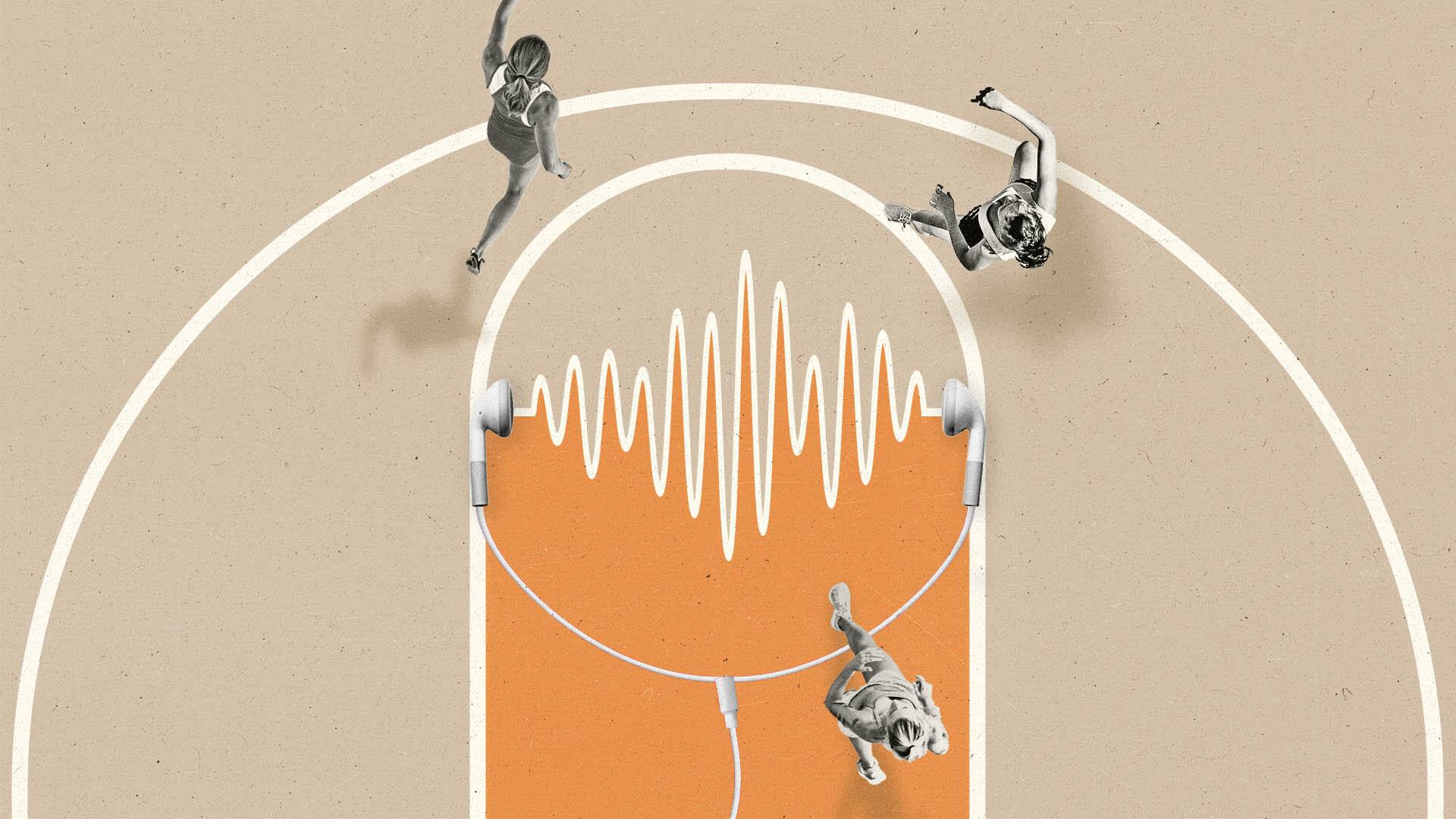Audio networks are betting big on the power of women’s sports content

Caitlin Clark, the college basketball star who recently made her WNBA debut, is the “GOAT of TV ratings.”
That’s according to The Wall Street Journal, which noted in a recent story that the NCAA March Madness women’s tournament final in which she played jumped to record viewership; other games in which she wasn’t playing during the tournament increased 76% in viewership compared to last year; and even the WNBA draft attracted five times the audience as last year.
Clark’s popularity reflects a growing interest in the larger world of women’s sports, from consumers and advertisers alike. And while many headlines tout increased TV viewership, the small screen isn’t the only place looking to ride this wave: audio platforms are too.
“By combining the scale of broadcast radio with the power of podcast storytelling, we can give brands meaningful reach with every audience they need for real impact,” iHeartMedia CMO Gayle Troberman tells The Current.
In April, iHeartMedia and the agency Deep Blue Sports and Entertainment announced the first-ever audio network dedicated exclusively to women’s sports, an initiative that could help open the floodgates for audio platforms to capitalize on the growth. As brands look to increase their investment in women’s sports this year, the network reflects the opportunities for advertisers in the sometimes-overlooked audio channel.
“Our ambition is that this network introduces and turns more first-time listeners and casual fans into regular women’s sports supporters and brings more advertisers into the space to test and prove what we know women’s sports delivers: deeply compelling stories and equally engaged fandom,” Laura Correnti, CEO and founder of Deep Blue, tells The Current.
Audio’s opportunities for advertisers
Deloitte projects women’s sports to generate over $1 billion in total global revenue in 2024 for the first time, led by an estimated $700 million in commercial revenue, which includes sponsorships. GroupM said in March that it would double its annual media investment in women’s sports. Nike struck a sponsorship deal with Clark reportedly worth $28 million.
It’s a major shift in a short time. A recent survey found that participating brands were spending on average just 9% of their total media budgets on women’s sports in 2023, according to a report released in October by Sports Innovation Lab. Of those brands, 83% said they planned to increase that investment this year.
“Women’s sports have inherently been difficult to find and difficult to buy, largely due to a lack of media coverage and limited shoulder or ancillary programming,” Correnti says.
“Audio presents the opportunity to get into market with more content quickly, based on turnkey production capabilities while reaching more listeners via the scale [that] broadcast, satellite and streaming-audio distribution affords.”
As audio makes a mark in women’s sports, brands could find opportunities in both the mass reach of broadcast radio and the emergence of programmatic targeting in digital podcasting.
“Advertisers are finding tremendous results in podcasting, which is why the space continues to grow,” says Cathy Csukas, founder and CEO of audio advertising company AdLarge. “And a lot of brands are using the space and wanting to connect with these very powerful audiences.”
A recent report from SiriusXM Media, GroupM and Edison Research highlighted the potential for advertisers in audio for attracting sports fans. Of those who identified as sports fans, 64% said they “frequently” or “occasionally” listen to sports content like radio or podcasts. And 67 percent of sports audio listeners said they trust products used by their favorite athletes.
“Sports audio listeners, we saw from this study in general, are more agreeable to advertising, they’re more likely to take action on advertising and just as a demographic, they’re an attractive audience,” Melissa Paris, VP of sales research at SiriusXM, told Marketing Brew.
iHeartMedia’s women’s sports platform — which it plans to start rolling out in the coming months ahead of the Olympics this summer — will put that fandom to the test for women’s-sports-specific content, offering round-the-clock coverage across 500 radio stations in the U.S., as well as a digital podcast network fronted by female talent.
“Whereas [traditional] TV has been declining year over year, audio has been holding mass reach at mass scale,” Troberman says. “Brands find incremental reach, which means incremental sales and impact. We see it over and over again.”
Closing the coverage gap
According to a recent report by The Collective, a women-focused agency by Wasserman, women’s sports coverage — across broadcast, streaming, social media and digital publications — was at 15% as of 2022, with the other 85% dedicated to men’s sports.
The report said that if growth continued at the same rate, women’s sports coverage would reach 20% by 2025. Initiatives like iHeartMedia and Deep Blue’s audio network could accelerate that growth.
“We think we have a huge opportunity to change those numbers and create parity,” Troberman says.
Further, Csukas tells The Current she’s looking to add women’s sports content and partners to the company’s podcast network fwd., which curates content created and hosted by women.
“We continue to look for stories that aren’t being told and voices that aren’t being heard,” she says.
“We have a supply issue,” she adds. “We need to build supply and build new audiences, and I think that brands will support that tremendously.”
Subscribe to The Current
Subscribe to The Current newsletter